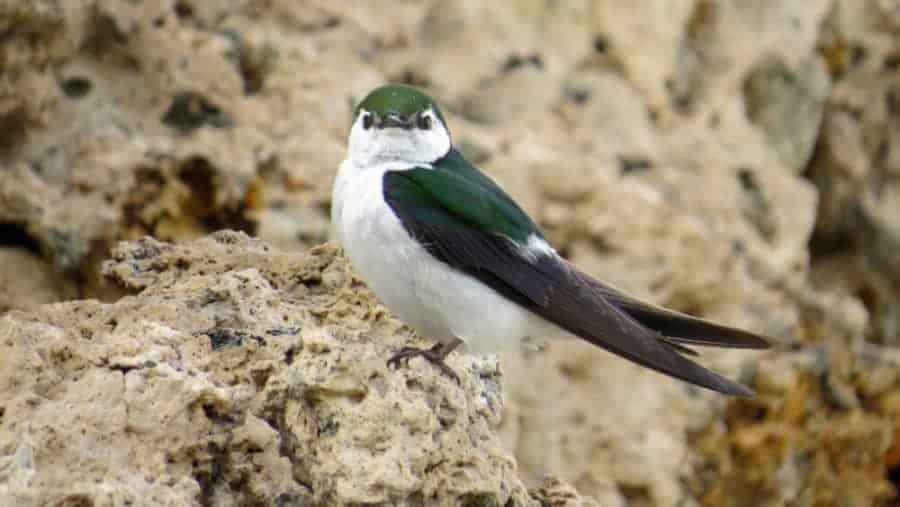America’s birds are disappearing at an alarming rate across all habitats, with more than 229 species now requiring urgent conservation action, according to a sobering new report released this week. The 2025 State of the Birds report, unveiled during the 90th annual North American Wildlife and Natural Resources Conference in Louisville, Kentucky, reveals a continuing crisis that affects not just birds, but potentially human wellbeing and the economy.
The comprehensive assessment comes five years after researchers documented the staggering loss of 3 billion birds in North America over the past half-century. Far from showing improvement, the new data indicate the situation has worsened.
“Birds tell us that we have a full-on emergency across all habitats,” said Marshall Johnson, chief conservation officer at the National Audubon Society.
Among the most troubling findings is the identification of 112 “Tipping Point species” that have lost more than half their populations in the last 50 years. Even more concerning, 42 species are now classified as “red-alert,” facing perilously low populations that put them at imminent risk of extinction without immediate intervention. These include the Allen’s Hummingbird, Tricolored Blackbird, and Saltmarsh Sparrow.
Particularly surprising is the decline of duck populations, which had been a rare success story in previous reports but are now trending downward amid changing environmental conditions.
Dr. Amanda Rodewald, faculty director of the Cornell Lab of Ornithology’s Center for Avian Population Studies, draws parallels between bird health and human wellbeing. “The rapid declines in birds signal the intensifying stressors that wildlife and people alike are experiencing around the world because of habitat loss, environmental degradation, and extreme weather events,” she explained. “When we see declines like those outlined in the report, we need to remember that if conditions are not healthy for birds, they’re unlikely to be healthy for us.”
The report, produced by a coalition of scientific and conservation organizations led by the North American Bird Conservation Initiative, found that more than one-third of U.S. bird species are now of high or moderate conservation concern. These declines span virtually all mainland and marine habitats, suggesting widespread environmental deterioration.
Despite the grim findings, experts emphasize there are economic and practical reasons to invest in bird conservation. Nearly 100 million Americans engage in birding activities, generating a total economic output of $279 billion and supporting 1.4 million jobs, according to the 2022 National Survey of Fishing, Hunting, and Wildlife-Associated Recreation cited in the report.
“There is no doubt that the 2025 State of the Birds report is cause for alarm,” acknowledged Jeff Walters, the conservation committee co-chair at the American Ornithological Society, “but it is also cause for hope. Public interest in birds and the economic benefits from birding are at unprecedented levels, as is the information available about the status of each and every one of our bird species.”
Beyond economics, the report highlights research showing that encounters with birds can improve mental health by reducing stress, anxiety, and depressive symptoms—benefits potentially at risk as bird populations diminish.
Conservation success stories offer templates for what works. “Many bird populations are struggling. But a proven blueprint for success is science-based planning and collaborative investment in habitat conservation,” said Dr. Steve Adair, Ducks Unlimited chief scientist.
Adair pointed to past achievements: “Decades of strategic and aggressive wetland habitat conservation from hunters, landowners, state and federal agencies, and corporations has boosted numerous waterfowl and waterbird species when weather conditions are favorable. We’ve shown it works. And we must do more.”
The coalition behind the report identifies several successful conservation approaches including conservation ranching, coastal restoration, forest renewal, and seabird translocation programs. These initiatives demonstrate how strategic investments and collaborations between government agencies, private landowners, and conservation organizations can help recover bird populations when properly implemented and funded.
“Fortunately, many of the actions that are good for birds are good for us. When we protect the habitats that birds rely upon, we also protect the ecosystem services that sustain us,” noted Rodewald.
However, Michael J. Parr, President of American Bird Conservancy, emphasized that current efforts are insufficient to address the scale of the crisis. “We have clear evidence that conservation works in halting declines. What we now need more than ever are programs and funding that match the scale of the greatest challenges birds face today. The science is solid on how to reverse the damage done, but to succeed, these issues need to be taken seriously.”
As spring migration begins across much of the United States, the stakes for implementing these solutions become increasingly apparent. Each silent dawn represents not just lost biodiversity but potentially degraded ecosystems that support human communities as well.
Johnson offered a final appeal for urgent action that transcends political divisions: “Birds unite us across the hemisphere and across the political spectrum—there should be no hesitation as we move to protect them today and in the future.”
If our reporting has informed or inspired you, please consider making a donation. Every contribution, no matter the size, empowers us to continue delivering accurate, engaging, and trustworthy science and medical news. Independent journalism requires time, effort, and resources—your support ensures we can keep uncovering the stories that matter most to you.
Join us in making knowledge accessible and impactful. Thank you for standing with us!

